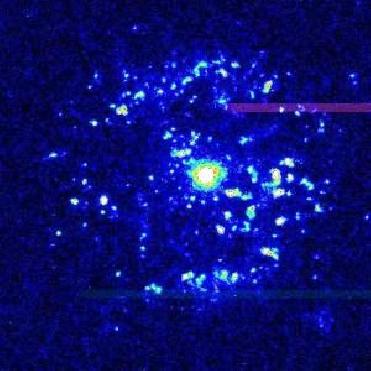
The star, called T Pyxidis will self-destruct itself, in an explosion with the force of 20 billion megatons of TNT and could strip away the Earth's ozone layer
T Pyxidis is composed of a dense white dwarf and a close companion star. The close binary system T Pyxidis, located in the southern hemisphere constellation Pyxis ("the Compass Box"), is known as a recurrent nova. Its massive white dwarf star use to explode in every 20 years.
As the quantity of gas reaches a certain limit and turns to a thermonuclear (nova). The previous nova explosions occurred in 1890, 1902, 1920, 1944 and 1967, making it 44 years overdue for its next thermonuclear explosion.
This star is only 3,260 light-years away from Earth and the delay in its explosion is transforming the star into a Supernova.
According to the scientists, it will become as bright as all the other stars in the galaxy put together. The Hubble space telescope has photographed the star preparing for its big bang with a series of smaller blasts or 'burps', called novas.
If the mass of the white dwarf in such a binary star system increases with time, then it will eventually reach the so-called Chandrasekhar Limit and will undergo instantaneous gravitational collapse resulting in an unimaginably powerful thermonuclear detonation which completely destroys the white dwarf and leaves no stellar remnant such as a pulsar (spinning neutron star) or a black hole.
A supernova is an explosion at the very end of the life of certain types of stars. Supernovas were named because they are objects that appeared to be 'new' stars they are actually stars at the end of their life-cycle.
-Courtesy:
Space.com Website
 Previous Article
Previous Article Next Article
Next Article












The Indian Air Force, in its flight trials evaluation report submitted before the Defence Ministry l..
view articleAn insight into the Medium Multi-Role Combat Aircraft competition...
view articleSky enthusiasts can now spot the International Space Station (ISS) commanded by Indian-American astr..
view article